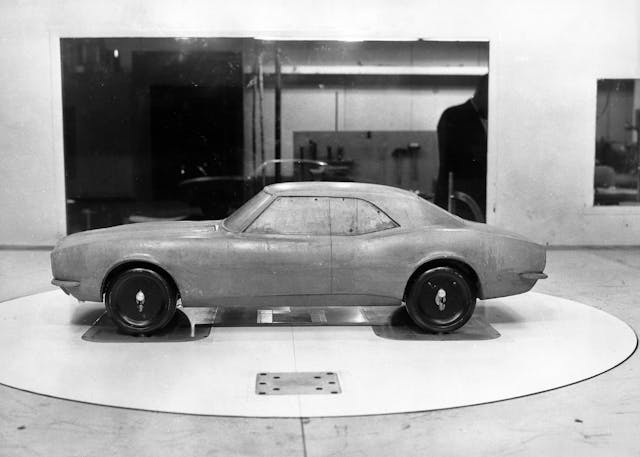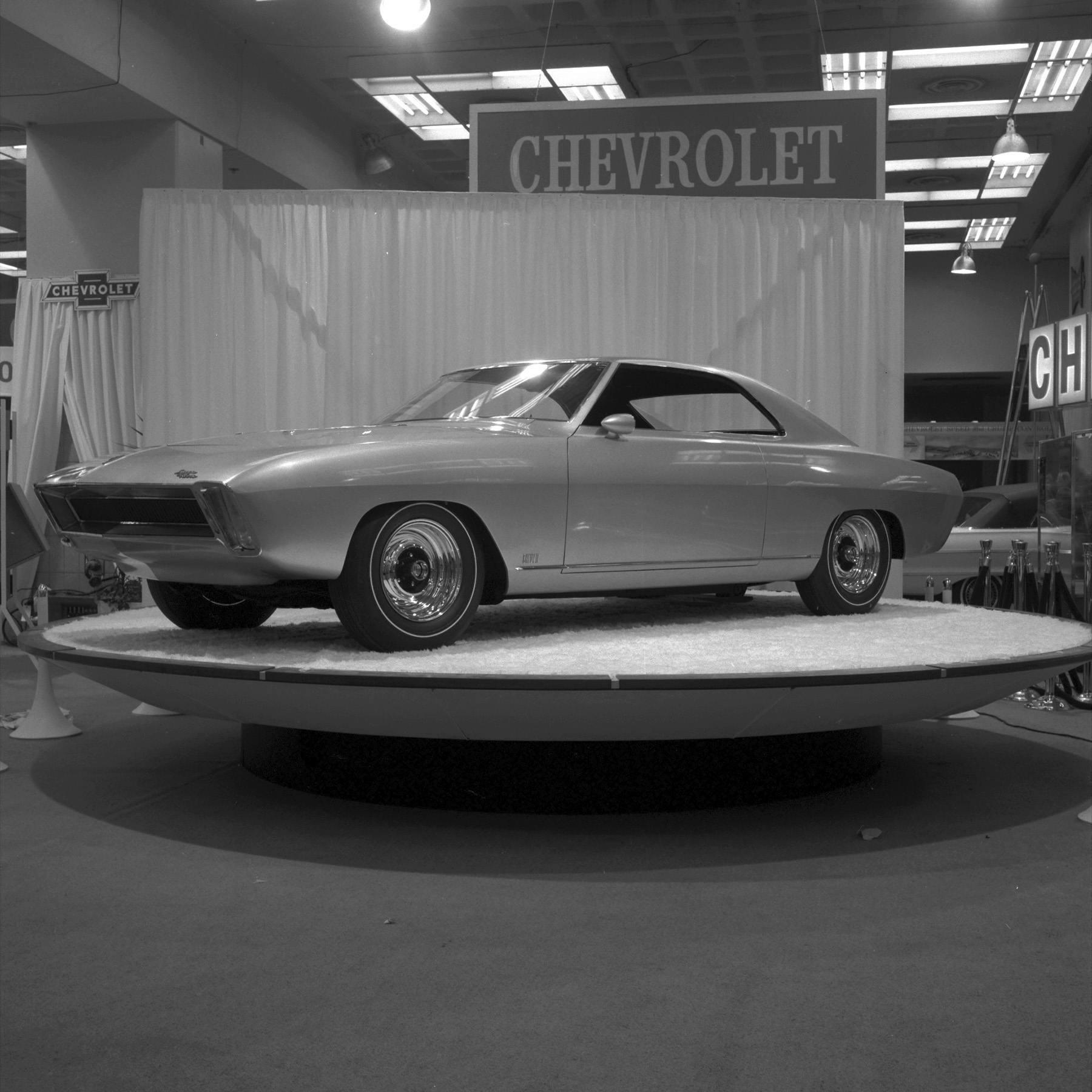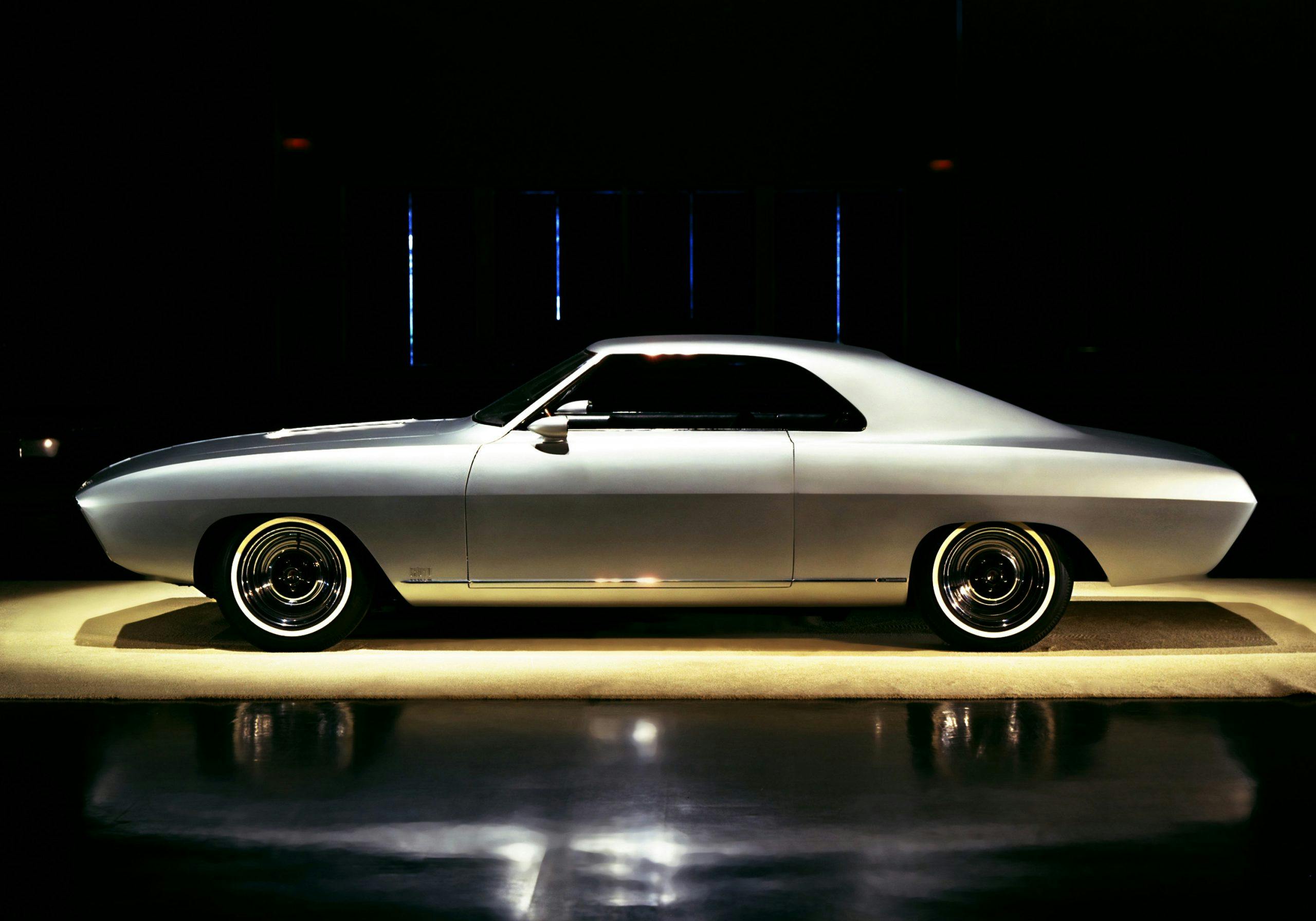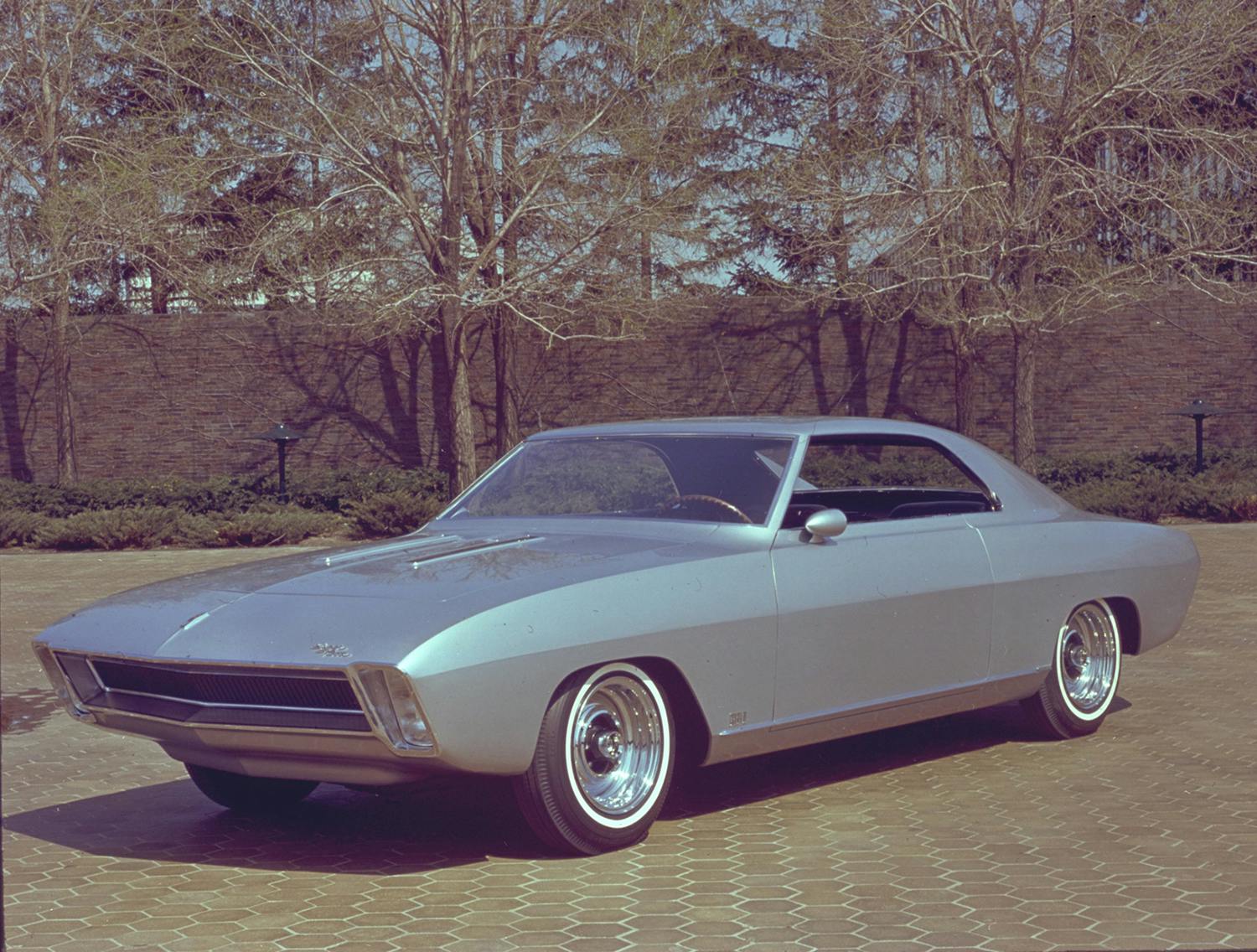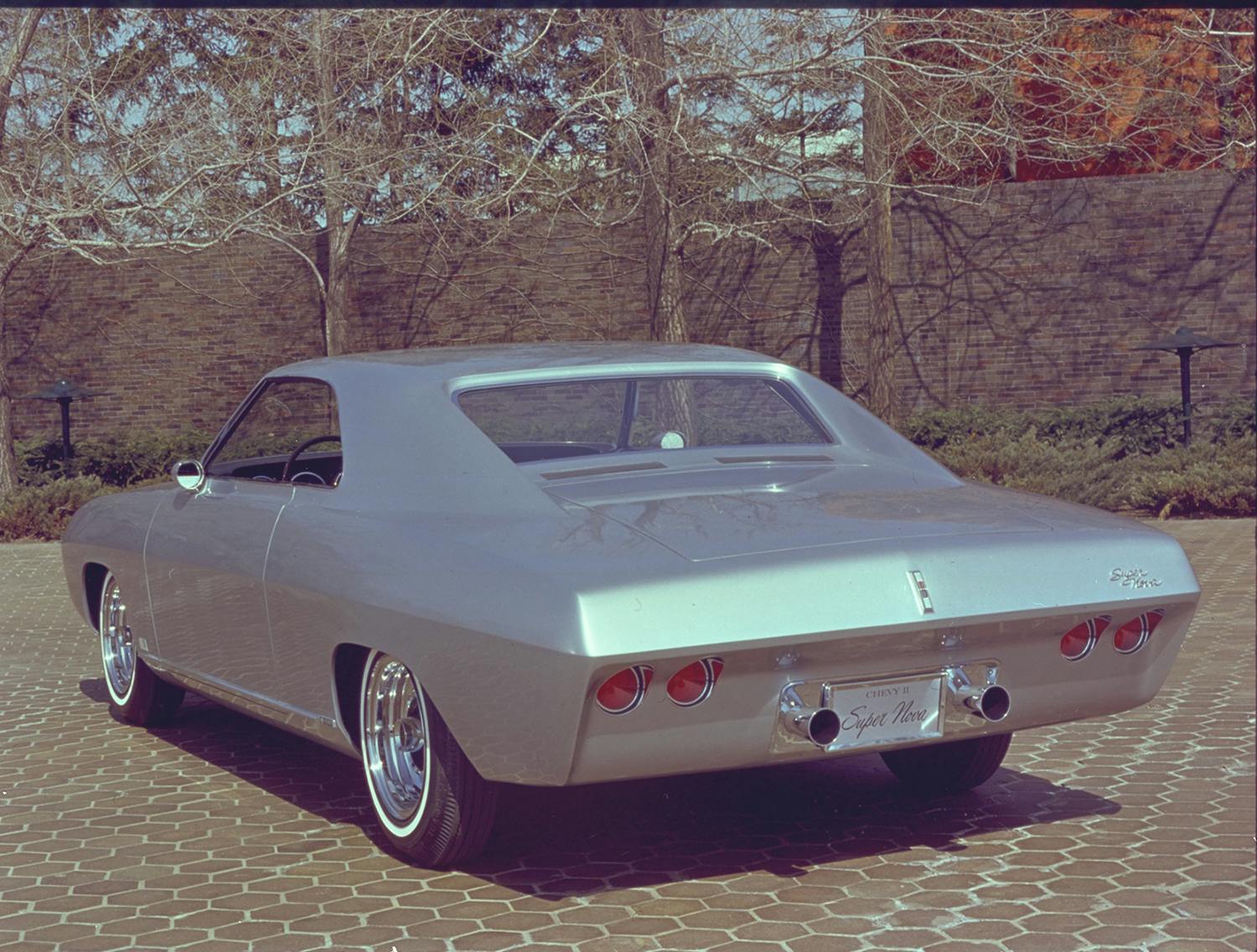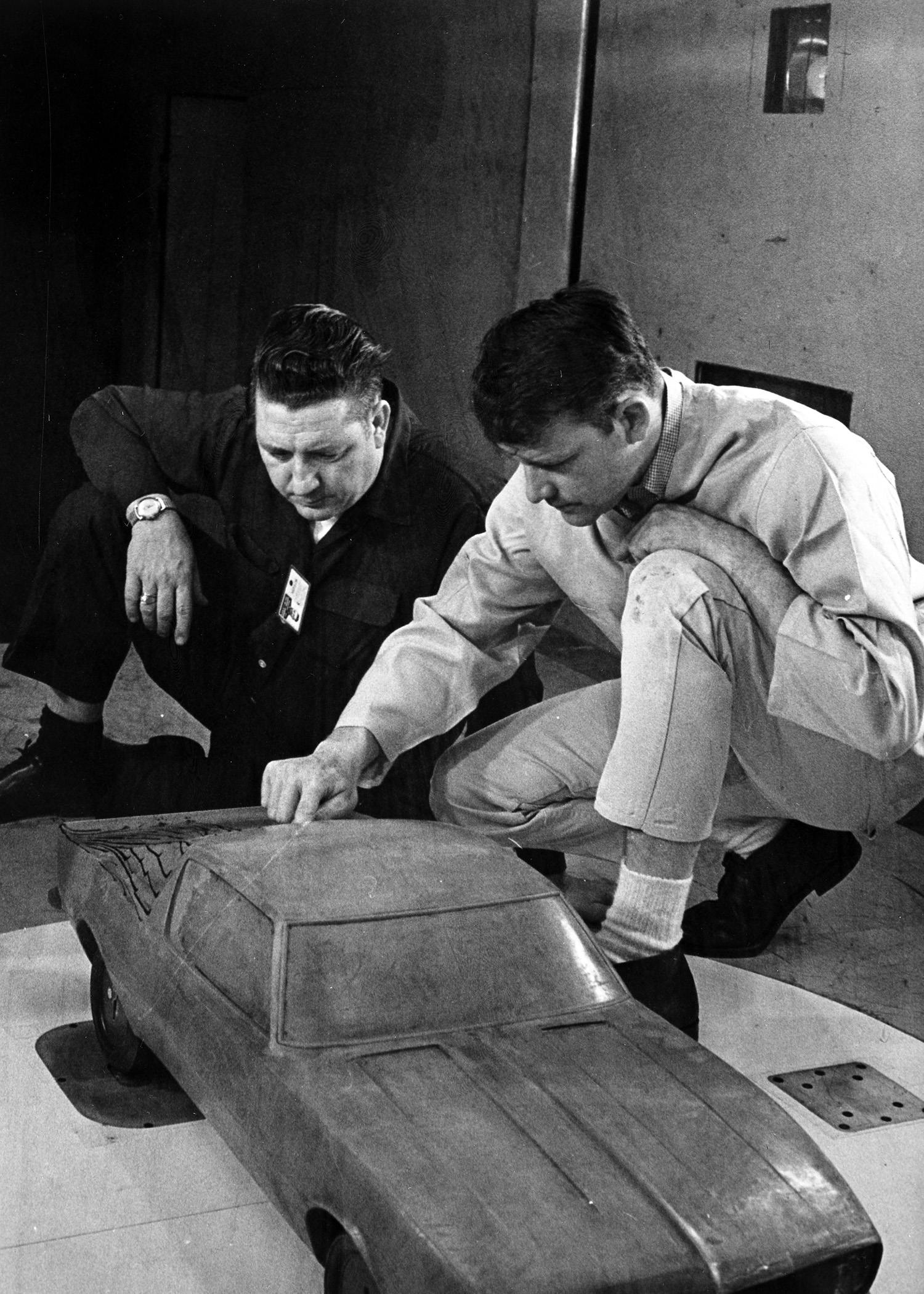Media | Articles
The first-gen Camaro was a compromised “committee car,” according to Bill Mitchell and Irv Rybicki
The first-generation Camaro’s history is well-trodden. From the minute Pete Estes issued his famous press release and video conference, featuring the 1966 rollout of “Norwood ‘F’ Car Pilot-Production Unit”, there’s been no shortage of enthusiasm for Chevrolet’s second-most iconic nameplate. That is, except from the people who designed the first model. When Bill Mitchell and Irv Rybicki—VPs of GM’s Styling Section—talked about the 1967–69 Camaro and related Firebird, they dismissed it.
“I can’t remember what the hell they look like,” Mitchell said in 1985. In his view, the spark of the original design was extinguished by compromises from all sides. “It’s a committee car.”

It’s hard to fathom just how much power Mitchell and Rybicki wielded, especially in the 1960s and ’70s. In the entire history of General Motors, only seven people have held their positions at the company. Almost twice as many people have walked on the moon.
Mitchell was among the most powerful, influential, and recognized automotive designers in the latter half of the 20th century. He shaped the way we viewed automobiles from the minute he took the job in 1958. Every recognizable GM car from the 1960s to the early ’70s were influenced by his aesthetic.

Irvin “Irv” Rybicki came right behind Mitchell. Rybicki was never the larger-than-life figure that Mitchell was, but he made an indelible mark in his own right. He’s most remembered for the 1971–81 Chevrolet Camaro and Pontiac Firebird, cars whose looks would help define the 1970s. His oeuvre also included the third-generation Camaro and the fourth-generation Corvette.
Marketplace
Buy and sell classics with confidence
In the mid-1980s, both Mitchell and Rybicki were interviewed for a series of automotive oral histories conducted by the Benson Ford Research Center at the Henry Ford Museum. For automotive enthusiasts, and particularly fans of GM cars, these interviews should be considered national treasures.
The conversations show how hard top-tier GM designers—despite their power—had to advocate for their work, how often they failed, and how bitter they could be about what might have been.
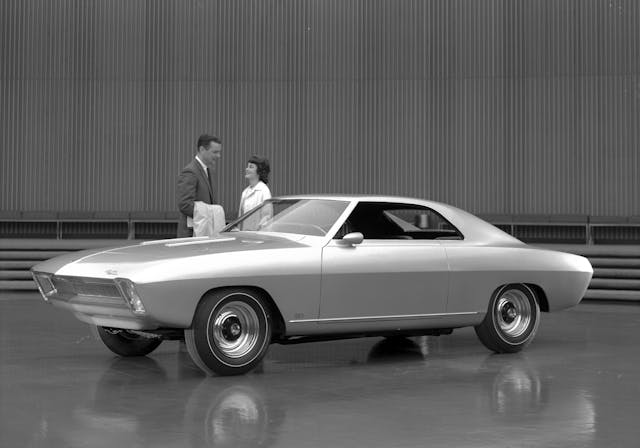
Rybicki explained the pressure that the design studios were under after the launch of the Ford Mustang at the 1964 New York World’s Fair in April. “They sold 400,000 [Mustangs] the first year, and everybody was back knocking on our door, ‘Where is that—we’d better get things moving here now.’ We were a little late coming in with the Camaro, and the first one wasn’t all that exciting, because it was a rush project, and we did it off the Chevrolet X platform.”
Such forced compromises were a source of major frustration for both Rybicki and Mitchell. According to Rybicki, by June 1963, Chevrolet had designed and planned a four-seater that could’ve competed with the Mustang from the start. Bunkie Knudsen, however, couldn’t be convinced that Chevrolet could sell the sporty coupe. “Buick had the Riviera. Bill Mitchell sold that on his own to the Buick division. He was very strong for getting a personalized coupe, and Buick bought it,” Rybicki remembered.
If Buick bought into the concept of a larger, four-seat sport coupe, the potential for a smaller, sportier two-door at Chevrolet could be substantial.
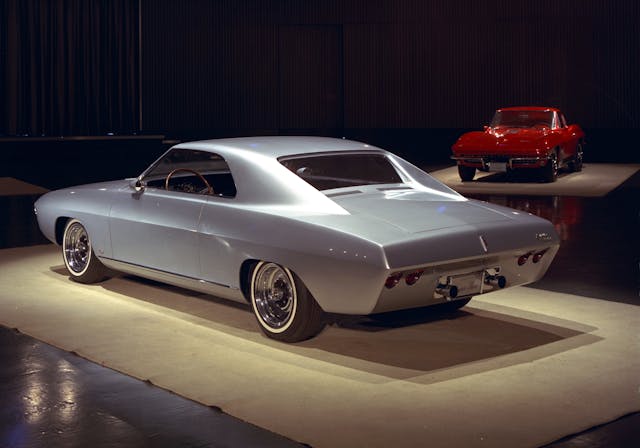
“We looked at the volumes that Buick was turning out the first years,” Rybicki said. “I was running Chevrolet studio at the time, and I sat down with the team, and we had a little discussion about it. Buick can sell X number of cars in one year at that price, what if we did a little personalized car? How many would Chevrolet sell if the price were right?
“We wouldn’t go the Buick route because that’s a more formal, sophisticated, four-place automobile. We’d do something to appeal to the youth of America. Something sporty and dynamic. We talked ourselves into it. I came to Bill [Mitchell] and I chatted with him about it, and he said, ‘Well, all right, if you want to do it, go ahead and do it. You got room.'”
The car was designed away from the high-profile Chevy-1 and Chevy-2 studios: “We had a warehouse across 12 Mile Road, and we went over there and worked on this car. I had a fellow working on it who is now in charge of Advanced-One, whose name is Phil Garcia, and we put together some ideas, found one we liked and modeled the automobile,” Rybicki said.
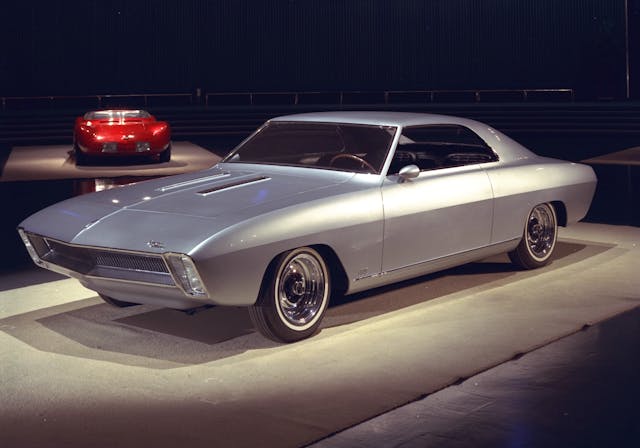
Phil Garcia isn’t a household name like Mitchell or even Rybicki, but he would go on to sketch the early design that would eventually become the 1973 Chevrolet Chevelle, Chevy’s Colonnade entry.
The car he worked on went as far as the clay model stage before Bill Mitchell saw it: “I invited Bill over. He took one walk around it, and he said, ‘Jeez, that’s a damned good-looking car. We’d better get [General Manager of the Chevrolet Division] Bunkie [Knudsen] over here.’”
Bunkie Knudsen was known for taking risks. He’d green-lit people like Pete Estes and John DeLorean to reinvigorate the Pontiac brand when he was running that division, and he’d submitted a request to produce what became the 1963 Riviera before Buick stole it out from under him.

Knudsen wasn’t sold on the small two-door. “’Damned exciting,’” he told Mitchell and Rybicki, but that was as far as it went. “’I want to tell you something, fellows,’” Mitchell later quoted Knudsen, “’The last thing Chevrolet needs is another car.'” For Rybicki and Mitchell, that marked the end of the line this small, sporty four-seater at Chevrolet.
Ultimately, Chevrolet did introduce a sporty four-door coupe concept at 1964 New York International Auto Show—dubbed the Super Nova—bearing a lot of the same mini-Riviera design cues. However, when the production Mustang appeared at the World’s Fair that same month, Chevrolet was suddenly caught flat-footed.
“The following year, in April, it was there for everyone to see that there was a need in that spot at the low end of the market. When Ford brought the Mustang out, General Motors didn’t react to it until the first year numbers came in,” Rybicki said. “Then we started moving fast. The question of whether Chevrolet needed another car or not was a moot point at that time.”
The bosses at Chevrolet, however, weren’t interested in the car that Rybicki and Mitchell had shown Knudsen 18 months before. Ignoring the Super Nova concept, GM brass wanted something cheap and doable in a hurry, and that meant producing a car that could sit on a ready-made platform.
That platform would be the upcoming 1968 Nova chassis, which had already been approved and engineered but wouldn’t be produced until the fall of 1967. “When we got the word we’d better get started on a four-placed, sporty vehicle—it wasn’t called Camaro at the time, it had an XP number—we thought we’d go back to that [earlier designed car],” Rybicki said, “but the decision was made that it would have to come off the Chevy-tooled underbody and cowl and use the suspension and engines and windshield. We didn’t have the flexibility.”

The resulting Camaro—a car that has attained legendary status since its introduction—simply wasn’t something that Rybicki or anyone else on his team was proud of. “The original Camaro, while it did well in the market, was not satisfying for anyone here in this building … not myself, not the chief designers involved,” he said in that 1985 interview.
In many ways, this result was a precursor for the Blazer concept from the mid-’60s that died on the vine. The K5 Blazer that eventually arrived in 1968 may have been a runaway success, but it didn’t take the sting out of what could’ve been.
Mitchell agreed that first Camaro was a shadow of its pre-production self. Mitchell felt that GM Executive Vice President Louis Clifford “Cliff” Goad, President Jack Gordon, and James E. “Bud” Goodman, Chief of GM’s Fisher Body Division, were responsible for a car that, in the end, wasn’t groundbreaking.

“Goad, Goodman, and Gordon, I said, killed it,” he recounted in the ’85 interview. “Each one said, ‘Shorten this, do this.’ It’s a committee car.”
What would’ve happened if Rybicki and Mitchell had the time they felt they needed to design a proper sports car? In short, we would have enjoyed the spirit of the second-generation Camaro years before the 1970 model year when it debuted. Rybicki said of the first-gen Camaro: “We did what we were asked to do. But when that program was finished, I got with our vehicle packaging group, and we started planning the second-generation car, and there was no interference. We did a new underbody and placed the seats where we wanted them, and got the cross section.”
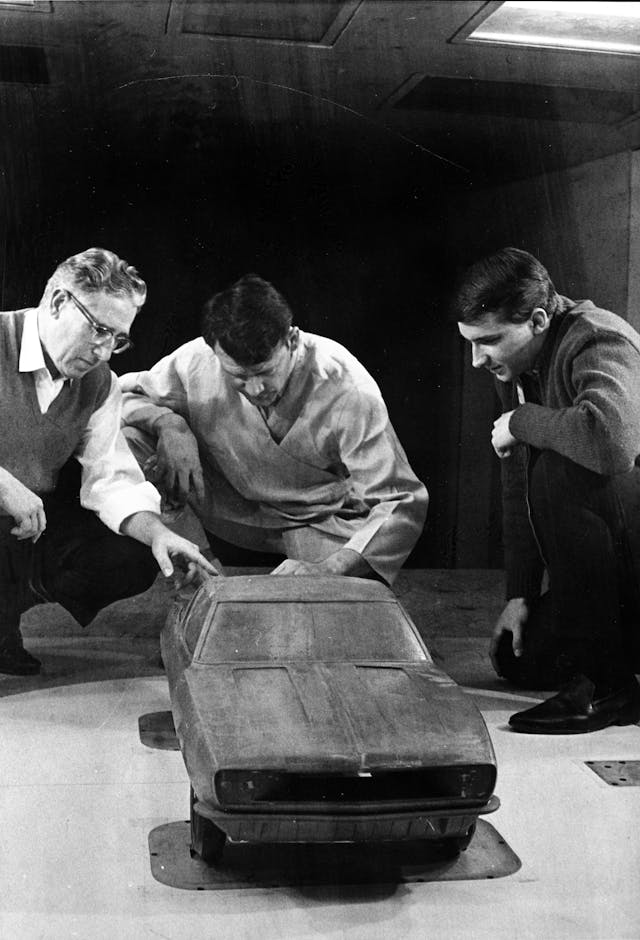
Mitchell was similarly fond of the second-gen Camaro and Firebird, pointing to the long-running success of those cars as evidence of their superiority: “They ran for 10 years, because I got the right dash-to-axle, the right cowl height,” he said.
For what it’s worth, GM designer John Schinella pushes back on Mitchell and Rybicki’s characterization that the original Camaro was a committee car. “I worked on that first Camaro, and let me tell you, that team put its heart and soul into the design,” Schinella says. “Bunkie Knudsen would regularly come over to talk about it, and he liked the direction and thought it was a cleaner, more shapely execution than the Mustang.”
Even if Mitchell and Rybicki disapproved of the final product, GM’s quick turnaround to develop a competitor for the Mustang turned out to be a sound judgement call to right the wrong of its earlier oversight. Committee car or not, history will always honor the original Camaro.
The Mitchell and Rybicki interviews are cataloged at the University of Michigan’s Automobile in American Life and Society website.
